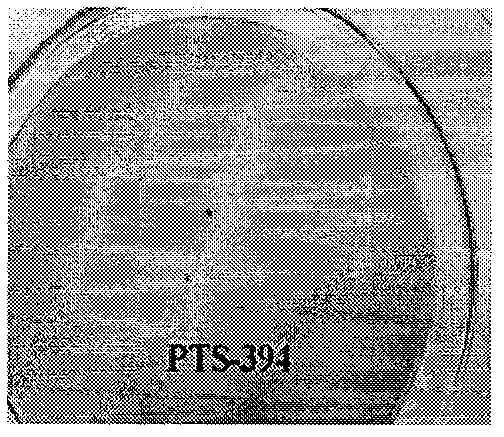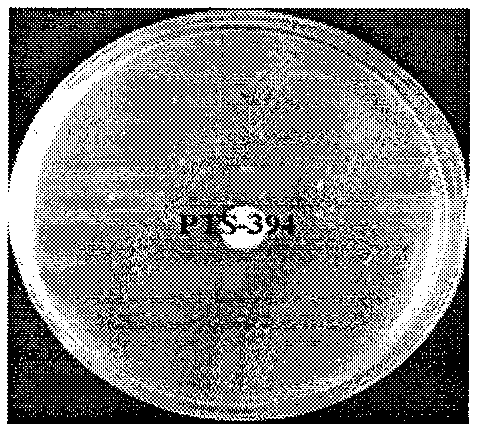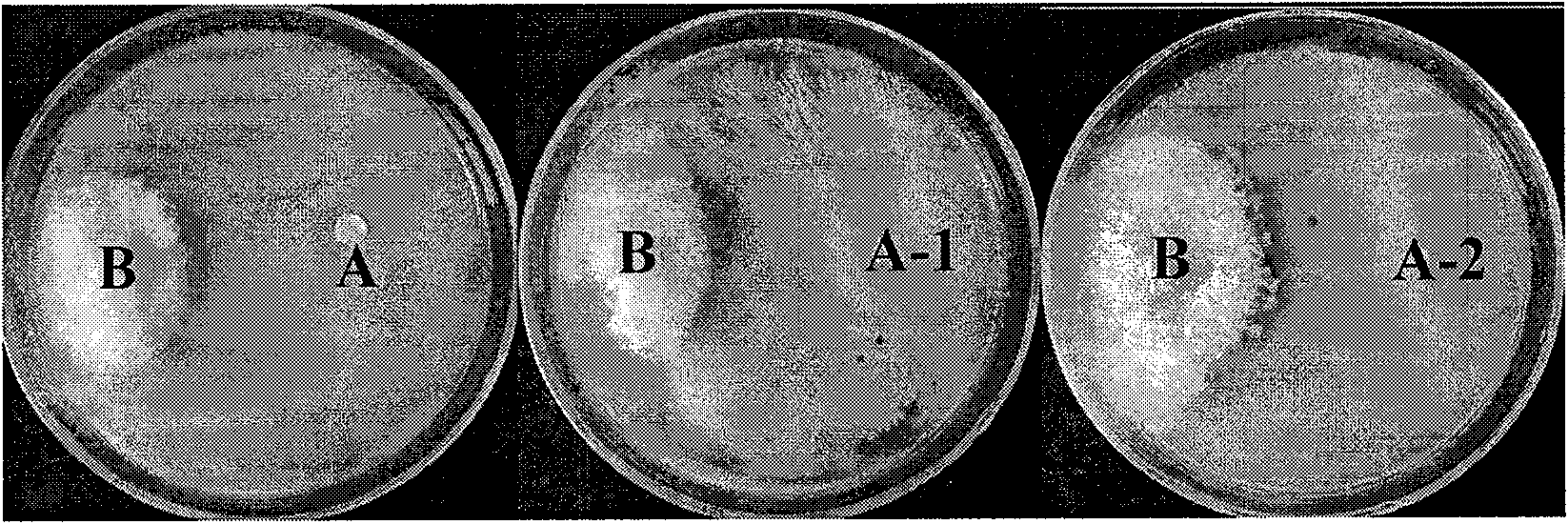Bacillus subtilis PTS-394 for preventing and controlling soil-borne diseases of solanaceous fruit vegetables and application thereof
A technology of PTS-394 and Bacillus subtilis, applied in the direction of application, fungicides, chemicals for biological control, etc., can solve problems such as difficult diagnosis and poor control, reduce drug costs, improve ecological environment, reduce The effect of residue
- Summary
- Abstract
- Description
- Claims
- Application Information
AI Technical Summary
Problems solved by technology
Method used
Image
Examples
Embodiment 1
[0035] Inhibition of Bacillus subtilis PTS-394 against Fusarium wilt and Ralstonia solanacearum.
[0036] Pathogen strains tested:
[0037] Fusarium wilt of tomato was provided by Plant Protection Institute of Jiangsu Academy of Agricultural Sciences. Use PSA medium (200g potato, 20g sucrose, 20g agar, and 1000mL distilled water, pH 5.6-6.6) to culture at 28°C for 5 days, and set aside.
[0038]Tomato solanacearum was provided by the Plant Protection Institute of Jiangsu Academy of Agricultural Sciences. Use NA medium (3.0 g of beef extract, 1 g of yeast extract, 5 g of peptone, 10 g of glucose, 20 g of agar, and 1000 mL of distilled water) at 28°C for 2 days with shaking (150 rpm / min), and set aside.
[0039] The Bacillus subtilis PTS-394 screened by Jiangsu Academy of Agricultural Sciences was activated on NA medium, then transferred into 50 mL NA medium, and cultured at 28° C. for 2 days with shaking (150 rpm / min) for later use. Tomato wilt fungus cake (7mm in diameter) ...
Embodiment 2
[0046] Metabolic secretions of Bacillus subtilis PTS-394-production of antimicrobial-related substances
[0047] Test materials: protease detection medium: skimmed milk powder 100g, agar 20g, dilute to 1000mL. Chitinase detection medium: colloidal chitin 15g, MgSO4 7H 2 O 0.5g, FeSO 4 ·7H 2 O 0.01g, K 2 HPO 4 0.7g, KH 2 PO 4 0.3g, 20g agar, dilute to 1000mL, pH7.0~7.2. Cellulase detection medium: peptone 10g, yeast powder 10g, sodium carboxymethylcellulose 10g, NaCl 5g, KH 2 PO 4 1g, 20g agar, dilute to 1000mL, pH7.0. Siderophilic detection medium: CAS 60.5g, 10mL ferric iron solution (1mmol.L -1 FeCl 3 ·6H 2 O), HDTMA 72.9g, agar 20g, be settled to 1000mL, pH7.0.
[0048] The Bacillus subtilis PTS-394 screened by Jiangsu Academy of Agricultural Sciences was activated on NA medium, then transferred into 50 mL NA culture medium, cultured at 28° C. with shaking (150 rpm / min) for 2 days, and set aside.
[0049] Protease detection: place a 5mm sterilized filter pa...
Embodiment 3
[0056] Preparation of 20 billion bacillus subtilis PTS-394 water agent
[0057] A. Strain preparation and activation.
[0058] The NA medium (same as in Example 1) was sterilized by the conventional method, made into a slant, and after pre-cultured for 2 days, was inoculated with Bacillus subtilis PTS-394, culture temperature: 28° C.; culture time: 2 days.
[0059] B, liquid fermentation.
[0060] Primary fermentation: the above-mentioned cultivated test tube slant, with an inoculation ring to transfer a ring of bacterial lawn into 500mLNA culture solution (same as in Example 1), and transfer 2 bottles altogether. Shake (150rpm / min) culture at 28°C for 2 days and set aside.
[0061] Secondary fermentation: medium formula: bean cake powder 1.0%, soybean powder 0.5%, yeast powder 0.15%, corn flour 2.0%, fish meal 1.0%, NaCl 0.05%, CaCO 3 0.3%. The pH before elimination is 7.5. Feed 1 ton into a 2 ton fermenter. Sterilize at 121°C for 30 minutes. When cooling to about 30°C...
PUM
 Login to View More
Login to View More Abstract
Description
Claims
Application Information
 Login to View More
Login to View More - R&D
- Intellectual Property
- Life Sciences
- Materials
- Tech Scout
- Unparalleled Data Quality
- Higher Quality Content
- 60% Fewer Hallucinations
Browse by: Latest US Patents, China's latest patents, Technical Efficacy Thesaurus, Application Domain, Technology Topic, Popular Technical Reports.
© 2025 PatSnap. All rights reserved.Legal|Privacy policy|Modern Slavery Act Transparency Statement|Sitemap|About US| Contact US: help@patsnap.com



